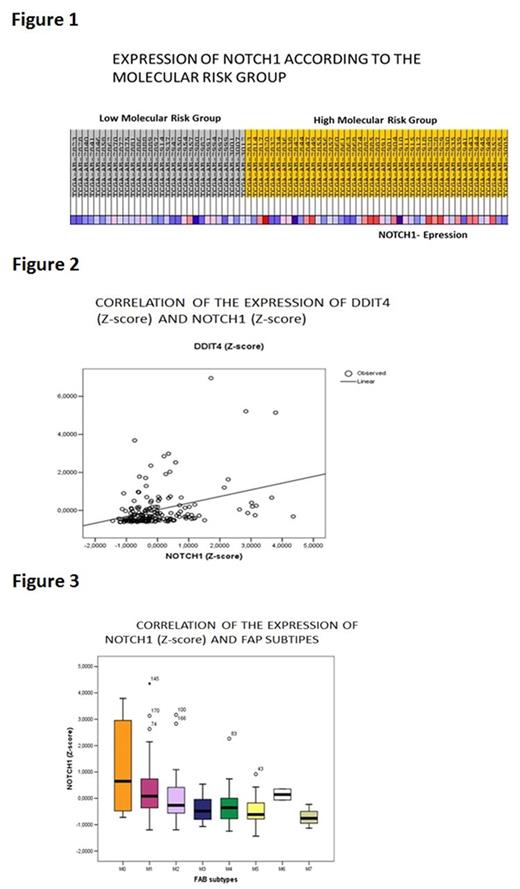Abstract
In a meta-analysis, our team identified previously that DDIT4 expression is related with a worse outcome of several cancer types, including acute myeloid leukemia (AML). DDIT4 gene product is a repressor of mTOR activity and recent findings in the triple negative breast cancer model suggest that mTOR pathway inhibition lead to the enrichment of cancer stem cells, explaining indirectly the relationship between DDIT4 and the outcome and suggesting that a high DDIT4 expression could be related with expression of stem-cells markers, such as NOTCH1.
We evaluated 200 AML patients from the TCGA dataset. Clinical features and level 2 data of gene expression were retrieved from the website cbioportal.org for mTOR pathway and stem cell markers including ALDH genes. Gene Set Enrichment Analysis (GSEA) for biological processes was done comparing patients with high risk vs low risk determined by molecular abnormalities.
GSEA analysis found not differences in the mTOR pathway. DDIT4 is not included in none gene ontology datasets. NOTCH1 and DDIT4 expression was enriched in patients with high molecular risk and statistical differences were found mainly between good and poor prognostic groups (score -0.45 and -0.46, respectively). We next compared the correlation between DDIT4 and NOTCH1 in the entire cohort. The correlation was significant (R2=0.121; P<0.0001). NOTCH1 was over expressed in the M0 FAB subtype while the lowest expression was found in M3, M4, M5 and M7 subtypes.
This work shows the relevance of DDIT4 and NOTCH1 in the biology of AML and his association with most undifferentiated subtypes. Association between DDIT4 with NOTCH1 should be evaluated with the intention of explore therapeutic opportunities.
No relevant conflicts of interest to declare.
Author notes
Asterisk with author names denotes non-ASH members.


This feature is available to Subscribers Only
Sign In or Create an Account Close Modal